#Better cotton
Text
Better cotton conference in Istanbul

Better Cotton will host its annual conference 26-27 June in the cotton-producing country of Türkiye, renowned for its textile manufacturing. Taking place at the Hilton Istanbul Bomonti Hotel & Conference Center, the event will bring together more than 200 industry stakeholders – both in-person and online – representing all stages of the supply chain. Registration is still open and available.
A focus on ‘Accelerating Impact’ unites the four themes: Putting People First, Driving Change at Field Level, Understanding Policy & Industry Trends, and Reporting on Data & Traceability. Sessions will explore the sector’s most compelling issues and developments, including regenerative agriculture, decent work responsibilities across the supply train, traceability and sustainability legislation.
Antonie Fountain, managing director at VOICE Network, will serve as the conference host, while keynote speakers will come from three continents and various disciplines.
Aarti Kapoor, Founder and Executive Director of human rights agency Embode, will kickstart the first theme, ‘Putting People First’
Lewis Perkins, President of the Apparel Impact Institute (Aii), will lead discussion for the ‘Driving Change at Field Level’ theme
Dr Vidhura Ralapanawe, Executive Vice President for Innovation and Sustainability at global apparel manufacturer Epic Group, will introduce the theme ‘Understanding Policy & Industry Trends’
Tülin Akın, founder of Turkish farmer social enterprise Tabit, will lead on the event’s final theme, ‘Reporting on Data & Traceability’
Better Cotton Farmers will feature throughout the programme, connecting stakeholders directly with cotton farming communities, including representatives from Türkiye, India, Mozambique, Pakistan, Tajikistan and the US.
The ‘Putting People First’ theme will cover the social side of cotton farming – from promoting sustainable livelihoods to ensuring decent work. Conversations will explore ideas around farmer remuneration as well as the role producer organisations can play in supporting this mission.
‘Driving Change at Field Level’ will delve into a number of topics, from women’s empowerment and farmer financing mechanisms to regenerative agriculture and cross-commodity collaboration. A timely discussion on carbon markets will get things underway, as panellists debate the pros and cons of such frameworks and whether they’re fit to accommodate millions of the world’s smallholder cotton farmers.
On day two, attention will turn to ‘Understanding Policy & Industry Trends’ as sessions consider the changing legislative landscape which continues to impact the fashion and textile sectors. Panel discussions will touch upon how stakeholders can prepare for emerging regulations, and how performance claims can support company sustainability goals.
The event’s final theme, ‘Reporting on Data & Traceability’, will consider data's crucial role in driving improvements at the field level and within cotton supply chains. Better Cotton will provide insights into its 2023 India Impact Report results, as well as the latest information relating to traceability.
Across the two-day event, there’ll be a plethora of organizations from across the cotton sector and beyond attending to offer their insights. Participants include:
Marks & Spencer
WWF
IDH
Solidaridad
International Institute for Sustainable Development (IISD)
2050
World Agroforestry
Olam Agri
There will be ample opportunity to network, including a welcome reception on Tuesday 25 June to kickstart an engaging couple of days. A networking dinner and the Better Cotton Member Awards will be hosted 26 June on a cruise along the Bosphorus to take in the city sights and Istanbul’s rich history.
Registration is available via this link, and we look forward to convening the industry.
A huge thank you to our event sponsors: USB Certification, Gildan, Cotton Incorporated, Artistic Milliners, Louis Dreyfus Company, Ortablu, Spectrum, Kipas Textiles, Supima, Cotton Brazil, Source Intelligence, San JFS, Global Organic Textile Standard Türkiye, Koton and RBDC.
0 notes
Text
Com manejo integrado de pragas, algodão brasileiro supera adversidades climáticas
Sistema integra proteção de cultivos e práticas agronômicas em busca de uma cotonicultura responsável ambientalmente, socialmente e economicamente
Foto: Divulgação/Grupo WS BCI
Há mais de duas décadas, a produção de algodão no cerrado brasileiro e o conceito de manejo integrado de pragas e doenças (MIP) andam juntos e evoluem a cada ano. O sistema, empregada desde os anos de 1960, consiste em integrar, numa matriz, diversas ferramentas de proteção de cultivos, como os defensivos químicos, agentes biológicos e outras tecnologias, assim como…

View On WordPress
#Abrapa#algodão#Better Cotton#cotonicultura#manejo integrado de pragas#produção de algodão#produtores de algodão
0 notes
Text

highschool au janeroxy.... i tried something a little different here i think it turned out pretty good👍
i wanna do dirk and jake but idk what sport dirk would be in... roxy and jake are in color gaurd and then janes part of the marching band so maybe football player ? I think that would fit
#homestuck#jane crocker#roxy lalonde#wormsart#homestuck fanart#homestuck au#hs#janeroxy#roxyjane#cotton candy#im really happy with roxys outfit... something a little better suited for fall and winter#theyre juniors or VERY early birthday sophomores . probably juniors though#it makes more sense i think
181 notes
·
View notes
Text


Ball Gown
Late 1860s
European
The MET (Accession Number: 1981.49.3a–c)
#ball gown#evening dress#fashion history#historical fashion#1860s#crinoline era#victorian#victorian fashion#red#black#silk#cotton#up close#19th century#europe#the met#this is one of those garments i would love to see mounted#to better understand shape and proportions#but i'm guessing it's chiffon so it's probably extremely fragile at this point
316 notes
·
View notes
Note
How did cotton win over linen anyway?
In short, colonialism, slavery and the industrial revolution. In length:
Cotton doesn't grow in Europe so before the Modern Era, cotton was rare and used in small quantities for specific purposes (lining doublets for example). The thing with cotton is, that's it can be printed with dye very easily. The colors are bright and they don't fade easily. With wool and silk fabrics, which were the more traditional fabrics for outer wear in Europe (silk for upper classes of course), patterns usually needed to be embroidered or woven to the cloth to last, which was very expensive. Wool is extremely hard to print to anything detailed that would stay even with modern technology. Silk can be printed easily today with screen printing, but before late 18th century the technique wasn't known in western world (it was invented in China a millenium ago) and the available methods didn't yeld good results.
So when in the late 17th century European trading companies were establishing trading posts in India, a huge producer of cotton fabrics, suddenly cotton was much more available in Europe. Indian calico cotton, which was sturdy and cheap and was painted or printed with colorful and intricate floral patters, chintz, especially caught on and became very fashionable. The popular Orientalism of the time also contributed to it becoming fasionable, chintz was seen as "exotic" and therefore appealing.
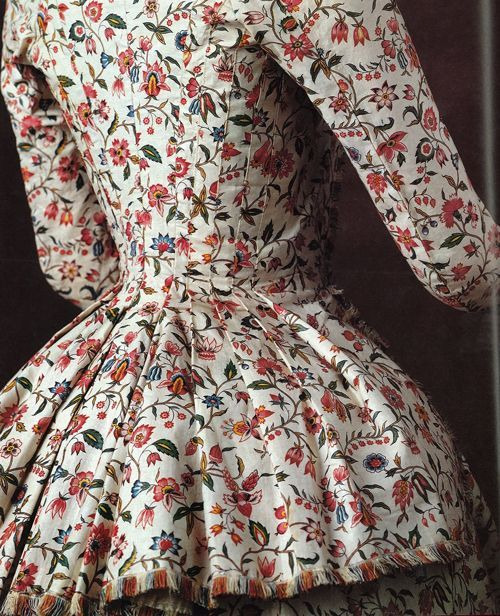
Here's a typical calico jacket from late 18th century. The ones in European markets often had white background, but red background was also fairly common.
The problem with this was that this was not great for the business of the European fabric producers, especially silk producers in France and wool producers in England, who before were dominating the European textile market and didn't like that they now had competition. So European countries imposed trade restrictions for Indian cotton, England banning cotton almost fully in 1721. Since the introduction of Indian cottons, there had been attempts to recreate it in Europe with little success. They didn't have nearly advanced enough fabric printing and cotton weaving techniques to match the level of Indian calico. Cotton trade with India didn't end though. The European trading companies would export Indian cottons to West African market to fund the trans-Atlantic slave trade that was growing quickly. European cottons were also imported to Africa. At first they didn't have great demand as they were so lacking compared to Indian cotton, but by the mid 1700s quality of English cotton had improved enough to be competitive.
Inventions in industrial textile machinery, specifically spinning jenny in 1780s and water frame in 1770s, would finally give England the advantages they needed to conquer the cotton market. These inventions allowed producing very cheap but good quality cotton and fabric printing, which would finally produce decent imitations of Indian calico in large quantities. Around the same time in mid 1700s, The East Indian Company had taken over Bengal and soon following most of the Indian sub-continent, effectively putting it under British colonial rule (but with a corporate rule dystopian twist). So when industrialized English cotton took over the market, The East India Company would suppress Indian textile industry to utilize Indian raw cotton production for English textile industry and then import cotton textiles back to India. In 1750s India's exports were mainly fine cotton and silk, but during the next century Indian export would become mostly raw materials. They effectively de-industrialized India to industrialize England further.
India, most notably Bengal area, had been an international textile hub for millennia, producing the finest cottons and silks with extremely advance techniques. Loosing cotton textile industry devastated Indian local economies and eradicated many traditional textile craft skills. Perhaps the most glaring example is that of Dhaka muslin. Named after the city in Bengal it was produced in, it was extremely fine and thin cotton requiring very complicated and time consuming spinning process, painstakingly meticulous hand-weaving process and a very specific breed of cotton. It was basically transparent as seen depicted in this Mughal painting from early 17th century.
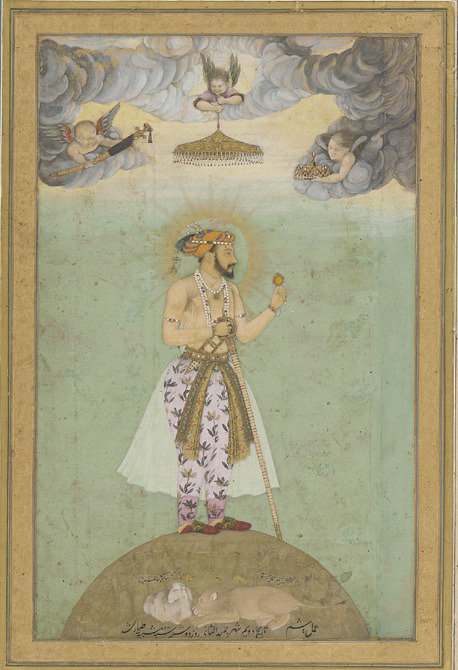
It was used by e.g. the ancient Greeks, Mughal emperors and, while the methods and it's production was systematically being destroyed by the British to squash competition, it became super fashionable in Europe. It was extremely expensive, even more so than silk, which is probably why it became so popular among the rich. In 1780s Marie Antoinette famously and scandalously wore chemise a la reine made from multiple layers of Dhaka muslin. In 1790s, when the empire silhouette took over, it became even more popular, continuing to the very early 1800s, till Dhaka muslin production fully collapsed and the knowledge and skill to produce it were lost. But earlier this year, after years lasting research to revive the Dhaka muslin funded by Bangladeshi government, they actually recreated it after finding the right right cotton plant and gathering spinners and weavers skilled in traditional craft to train with it. (It's super cool and I'm making a whole post about it (it has been in the making for months now) so I won't extend this post more.)


Marie Antoinette in the famous painting with wearing Dhaka muslin in 1783, and empress Joséphine Bonaparte in 1801 also wearing Dhaka muslin.
While the trans-Atlantic slave trade was partly funded by the cotton trade and industrial English cotton, the slave trade would also be used to bolster the emerging English cotton industry by forcing African slaves to work in the cotton plantations of Southern US. This produced even more (and cheaper (again slave labor)) raw material, which allowed the quick upward scaling of the cotton factories in Britain. Cotton was what really kicked off the industrial revolution, and it started in England, because they colonized their biggest competitor India and therefore were able to take hold of the whole cotton market and fund rapid industrialization.
Eventually the availability of cotton, increase in ready-made clothing and the luxurious reputation of cotton lead to cotton underwear replacing linen underwear (and eventually sheets) (the far superior option for the reasons I talked about here) in early Victorian Era. Before Victorian era underwear was very practical, just simple rectangles and triangles sewn together. It was just meant to protect the outer clothing and the skin, and it wasn't seen anyway, so why put the relatively scarce resources into making it pretty? Well, by the mid 1800s England was basically fully industrialized and resource were not scarce anymore. Middle class was increasing during the Victorian Era and, after the hard won battles of the workers movement, the conditions of workers was improving a bit. That combined with decrease in prices of clothing, most people were able to partake in fashion. This of course led to the upper classes finding new ways to separate themselves from lower classes. One of these things was getting fancy underwear. Fine cotton kept the fancy reputation it had gained first as an exotic new commodity in late 17th century and then in Regency Era as the extremely expensive fabric of queens and empresses. Cotton also is softer than linen, and therefore was seen as more luxurious against skin. So cotton shifts became the fancier shifts. At the same time cotton drawers were becoming common additional underwear for women.
It wouldn't stay as an upper class thing, because as said cotton was cheap and available. Ready-made clothing also helped spread the fancier cotton underwear, as then you could buy fairly cheaply pretty underwear and you didn't even have to put extra effort into it's decoration. At the same time cotton industry was massive and powerful and very much eager to promote cotton underwear as it would make a very steady and long lasting demand for cotton.
In conclusion, cotton has a dark and bloody history and it didn't become the standard underwear fabric for very good reasons.
Here's couple of excellent sources regarding the history of cotton industry:
The European Response to Indian Cottons, Prasannan Parthasarathi
INDIAN COTTON MILLS AND THE BRITISH ECONOMIC POLICY, 1854-1894, Rajib Lochan Sahoo
#i have fixed the wording in the beginning so it doesn't sound like i'm saying cotton in general dyed better than wool or silk#answers#fashion history#historical fashion#history#textile history#dress history#historical clothing#indian history#colonial history#indian textiles#cotton#slavery
2K notes
·
View notes
Photo
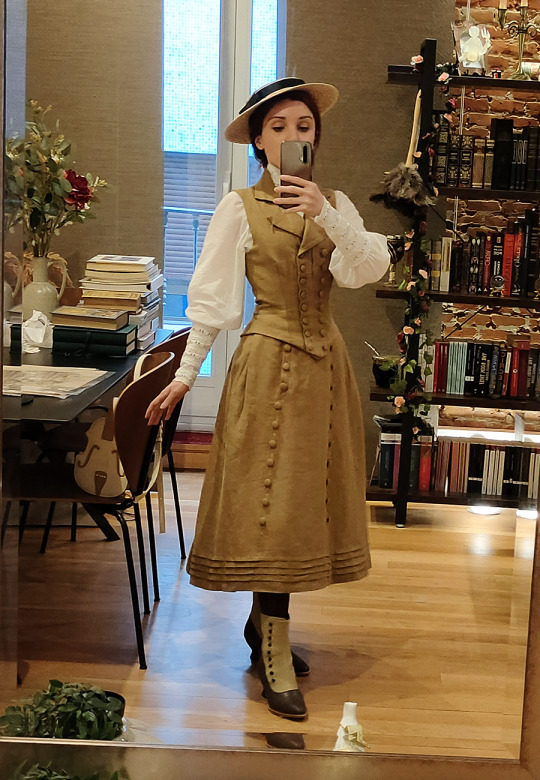


OHHHH my god I just got my latest GibsonGirlDress order and it’s a dream!!! this set is my new favourite 😭 look at it!!
#I keep ordering these vests in different colors they are so good!!#I ordered custom measurements for this one and it fits way better than my old ones I'm so happy!!#I have to take in the others but I'm too scared to ruin them..my sewing is not at that level yet ;;#but now I can use the measurements of this one for reference#the boots are from American Duchess#this set came with petticoat and stockings#also I'm wearing a corset! I'm built like a plank so it's worth mentioning that any shape is understructure#this is all linen and the blouse is cotton cambric#🥺❤️#personal#nips photos#nips blogs
745 notes
·
View notes
Text







This is so cute . . . From a Top Toys MLP commercial, the Argentina ponies are playing hide-and-seek and Surprise discovers the baby ponies
The commercial is at 16:30 in this video
#My Little Pony#G1#Top Toys#Argentina#commercial#baby ponies#Confetti#Firefly#Surprise#Heart Throb#Sparkler#Wind Whistler#Baby Confetti#Baby Cotton Candy#Baby Applejack#Baby Blue Belle#I like this animation better than the MLP 'n Friends animation#they're so cute
151 notes
·
View notes
Text


Dyeing this wheelchair arm bag. The original colors are fine but really not my style, and if it's hanging from my chair I'm basically wearing it...so I want stuff that looks like me. Anyway, this is yet another prototype. So far all my wheelchair arm bags have been millspun scraps. I did also look on ravelry--seems like the basic construction I went for is pretty standard. I also want to try saddlebags (as in, two pouches laying over the arm, one facing outside and the other tucked into me). I get really scared of dropping things or being pickpocketed so having bags that are more secure would be nice. Just need to find the time really.



#knitting#crochet#cotton#its a mix of both crafts bc it was easier#im getting a lot better at switching between the two on the same project. learnt some good joins is the main thing#powerchair user#disability#wheelchair bag
46 notes
·
View notes
Text

Today's project was a sort of proof of concept. Ever since I saw the method for making a folded brim (like in the Oslo hat), I've had the idea that the same method would make nice channels for a cinch pouch, and the idea has just sort of been brewing in my brain since then. I finally tried out my idea today, and I think it worked pretty well! I definitely have a few changes in mind for the next one, namely for neater edges on the sides of the channels, but for a trial this turned out well.
If anyone is interested, I can write up what I did, but it won't be a pattern per se (no stitch counts or anything), more of a recipe or methodology of how I did it.
#description in alt text#knitting#knitblr#trans#trans fiber artist#knit#fiber arts#i also knit this with what's supposedly worsted but acts like dk on us 2 needles so the fabric is very nice and dense#which is what i wanted but made it work up a lot slower#currently it's holding my tablet weaving cards because the pouch id sewn for them wasn't quite the right size#i mean neither is the knit pouch (even with measuring guage its narrower than i wanted) but knitting stretches more than quilting cotton#so they fell well enough and ill make a better one for my second trial of the pattern
41 notes
·
View notes
Text

working on Confetti's outfit finally
#i need to sew the hat down so it fits better but I'm pretty pleased with the overall shape#especially with the State i was in today 😮💨 i really needed a win#while i was working on this i had my back turned to Cotton Candy (her twin) and she threw Grub on the floor :(#the little creature coterie#wip#puppy surprise#pet surprise
23 notes
·
View notes
Text


Custom Kimbrey Keychain? Custom Kimbrey Keychain.
#trust me the colors are so much better irl#omori aubrey#omori kim#omori kimbrey#omori cotton candy#omori#aubrey#kim#aubrey x kim#keychain#custom keychain#woocry#lesbians#omori fandom
20 notes
·
View notes
Text
I'm a casual gamer.
And that's okay.
I, admittedly, kinda suck at most games. Platforming AND shooting? Nope. I can't manage both. Precise dodge times for potential lethal shots? No way. Combat systems past 4 buttons? I'll just lay here, thanks.
But I love a good story. I can't write out how much I absolutely adore stories. I may not be a writer, but my stories run through my veins. Because of this contradiction, I often find myself looking at a game, playing the first 3 stages/chapters/bosses/etc, and setting it down because I suck absolute ass at it. I'm not "Can't get past the tutorial jump of Cuphead game journalist" bad, but I am "The hardest thing I managed in videogames was that I beat the first 3 stages of Cuphead on simple mode" bad.
Because of this, I OFTEN find myself watching plot synapses of the more story-based games that I picked up, enjoyed, and realized would only be able to beat in 5 years.
I'm also, however, of the opinion that games shouldn't necessarily have an easy mode. Games like Dark Souls would lose value if they catered towards people like me, and I've accepted that I will never be able to beat them. But that doesn't mean I don't dive into internet rabbit holes about the plot of Doom, even though I can't even beat level 5.
Anyways, there's my rant.
#doom#dark souls#video games#cotton turtle#story#stories#writing#writers on tumblr#cuphead#gaming#games#xbox#first person shooter#rabbit hole#internet#the more tags i add the better right?#rant post#casual gameplay
134 notes
·
View notes
Text
i can’t believe i’m saying this but i’m going to be attempting to write a jamex oneshot for my friend’s birthday, does anyone have any recommendations for interviews/gifsets/posts that would be helpful research material??
#idk how i’m going to manage writing something that isn’t milex 😭#but i’m looking forward to giving it my best shot!#if only this cold would hurry up and get better i could start on it now#but as it is my brain feels like cotton wool so i thought i’d just try to gather some bits and pieces for research/inspiration#thank you in advance to anyone who can help out 🙏#jamex#jamie cook#alex turner#arctic monkeys#lulu posts
27 notes
·
View notes
Text
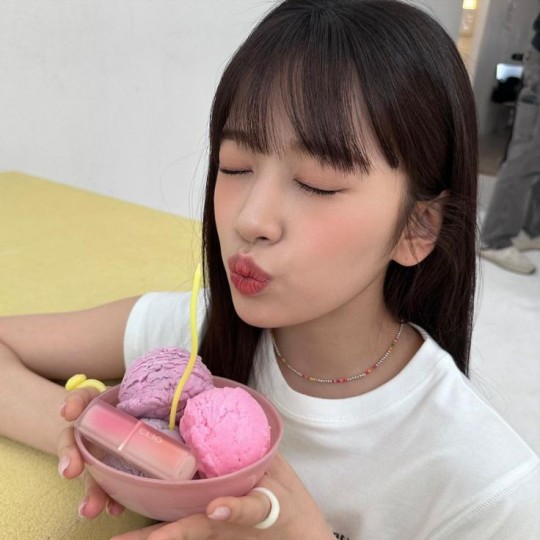
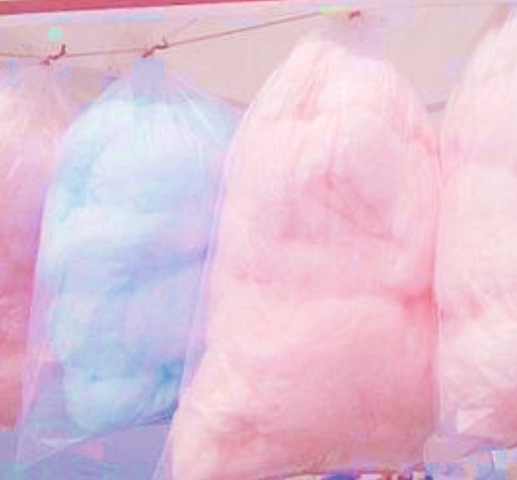

➳ ◠ ⌅ 🍭 ⁘⠀⠀

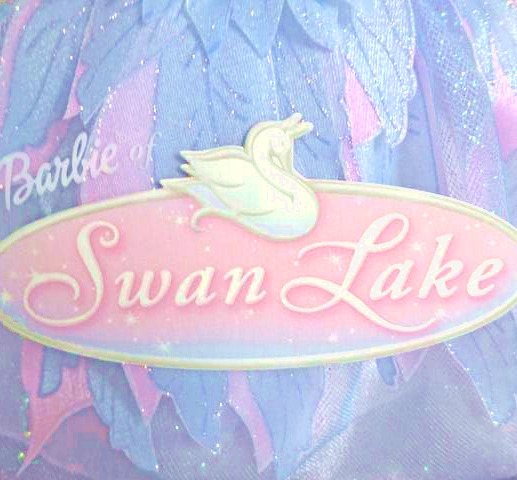

➳ ◠ ⌅ 🍨 ⁘⠀⠀ @sugarstasia

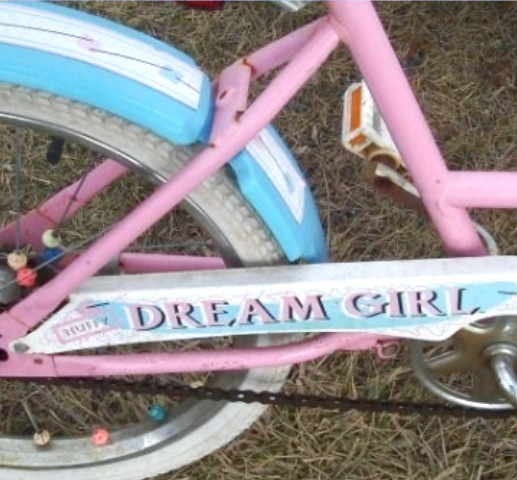
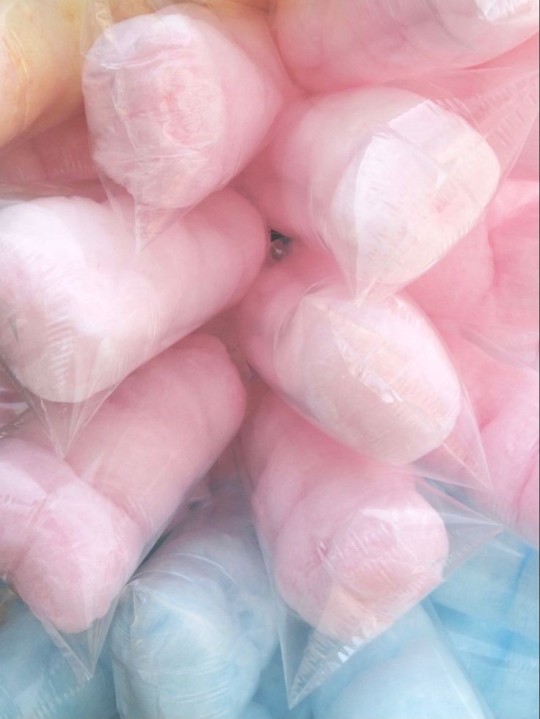
#some icons edited by me for different color hues so they fit a lil better but i kinda gave up ☠️☠️💀💀#PLEASE WHY DO I HAVE THE SAME COTTON CANDY ICONS AS THE OTHER TWO MBS 😭😭😭😭☹️☹️💔#PINTEREST BE HAVING THE SAME ICONS ITS SO HARD TO FIND DIFFERENT ICONS OF THE SAME THING THAT WORK😭😭😿🫠🫠😰😰😓😭😭😭#⠀ ➵ ⠀⠀ ∿ ⠀⠀⠀▧ ⠀⠀❒⠀⠀y vna⠀❀#ice cream event : sugarstasia#loc creds to y-unv#kpop moodboard#kpop messy moodboard#aesthetic moodboard#kpop gg#kpop icons#kpop gg moodboard#kpop layouts#messy moodboard#ice cream moodboard#blue moodboard#pink moodboard#white moodboard#ive yujin#ahn yujin#yujin#ive moodboard#yujin moodboard#cotton candy#cute moodboard#soft moodboard#pretty moodboard#random moodboard#barbie moodboard#kpop
64 notes
·
View notes
Text


waistcoat :^)
#there are a number of problems (e.g. whatever's going on w the collar seams) & things I still need to do (cloth buttons; lacing in the back)#also I don't have an iron so it's a little sort of. idk. puffy still#BUT. the important thing is I proved that I can handsew a decent waistcoat in half a week if I want to! yeehaw & all that#I'm v pleased w myself for that :^)#and also now if I do it again w better fabric (I could literally only find cotton in this town for some reason) I'll know what to improve#thoughts#I might also take some better photos when I do the details & it's not after midnight asjdkjkgfj#& when I can hunt down a cravat
240 notes
·
View notes
